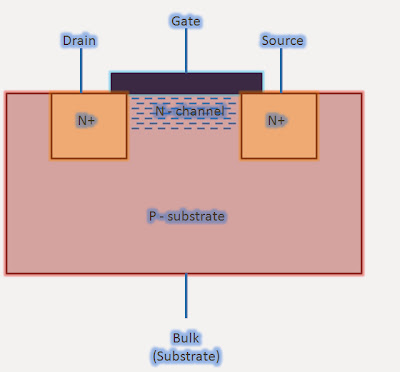Integrated
circuits are designed to work for a range of temperatures and voltages, and not
just for a single temperature and voltage. These have to work under different
environmental conditions and different electrical setup and user environments.
For instance, the temperature in the internals of an automobile may reach as
high as 150 degrees while operating. Also, automobiles may have to work in
colder regions where temperatures may reach -40 degrees during winters. So, a
chip designed for automobiles has to be designed so as to be able to work in
temperatures ranging from -40 to 150 degree Celsius. On the other hand,
consumer electronics may have to work in the range of -20 to +40 degrees only. Thus,
depending upon the application, the chip has to be robust enough to handle varying surrounding temperatures. Not just surrounding temperatures, the
voltage supplied by the voltage source may vary. The battery may have an output
voltage range. Also, the voltage regulator sitting inside or outside the chip
may have some inaccuracy range defined. Let us say, a SoC has a nominal
operating voltage of 1.2V with 10% variation. Thus, it can operate at any
voltage from 1.08 V to 1.32V. The integrated circuits have to be tolerable
enough to handle these variations. Not just these variations, the process by
which the integrated circuits are manufactured has variations due to its micro
nature. For example, while performing etching, the depth of etching may vary
from wafer to wafer, and from die to die. Similarly, doping, width of wires drawn, distance between wires may vary for each wire from chip-to-chip. Depending upon these, the behavior
(delay, static and dynamic power consumption etc) of cells on chip vary. These
variations are together referred as PVT (Process Voltage Temperature)
variations. The behavior of the devices also varies according to the PVT
variations. The library (liberty) models of the cells are characterized for
cell delays, transitions, static and dynamic power corresponding to different
PVT combinations. Not just for cells, for nets too, these variations are
possible. The net parameters (resistance, capacitance and inductance) may also
vary. These parameters also account for cell delay. In addition, nets introduce
delay of their own too. Hence, one may get nets with high or less delay. So,
these variations also have to be taken into account for robust integrated
circuit manufacture. This variation in net characteristic can be modeled as
their RC variation as it accounts for changes in resistance and capacitance
(ignoring inductance) of net.
 |
|
Figure 1: A racing car. (Taken from
en.wikipedia.com)
|
With proper
techniques, the patterns of the variations for both the cell and net parameters
(delay, power, resistance and capacitance) are characterized and their minima
and maxima are recorded. Each minima and maxima can be termed as a corner. Let
us say, each minima/maxima in cell characteristics as ‘PVT corner’ and net characteristics as ‘extraction corner’. Each
combination of PVT extraction corners is referred to as a ‘timing corner’ as it
represents a point where timing will be extreme. There is an assumption that if
the setup and hold conditions are met for the design at these corners, these
will be met at intermediate points and it will be safe to run under all
conditions. This is true in most of the cases, not always. There is always a
trade-off between number of signed-off corners and the sign-off quality.
For bigger
technologies, say 250 nm, only two corners used to be sufficient, one that
showed maximum cell delay and the other that showed least cell delay. Net variations
could be ignored for such technologies. In all, there used to be 2 PVT and 1
extraction corner. As we go down
technology nodes, net variations start coming into picture. Also, cell
characteristics do not show a linear behavior. Therefore, there is increased
number of PVT as well as extraction corners for lower technology nodes. For 28
nm, say, there can be 8 PVT corners as well 8 extraction corners. The number of
corners differs from foundry to foundry. The chip has to be signed off in each and every
corner to ensure it works in every corner. However, we may choose to sign-off
in lesser corners with applying some extra uncertainty as margin in lieu of not
signing off at these timing corners. The timing analyst needs to decide what is
appropriate depending upon the resources and schedule.
Also read:
